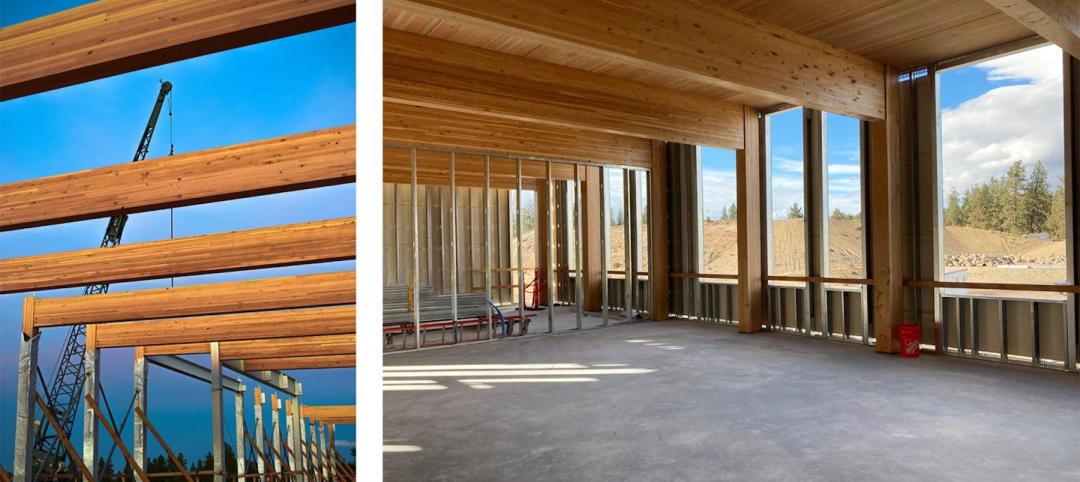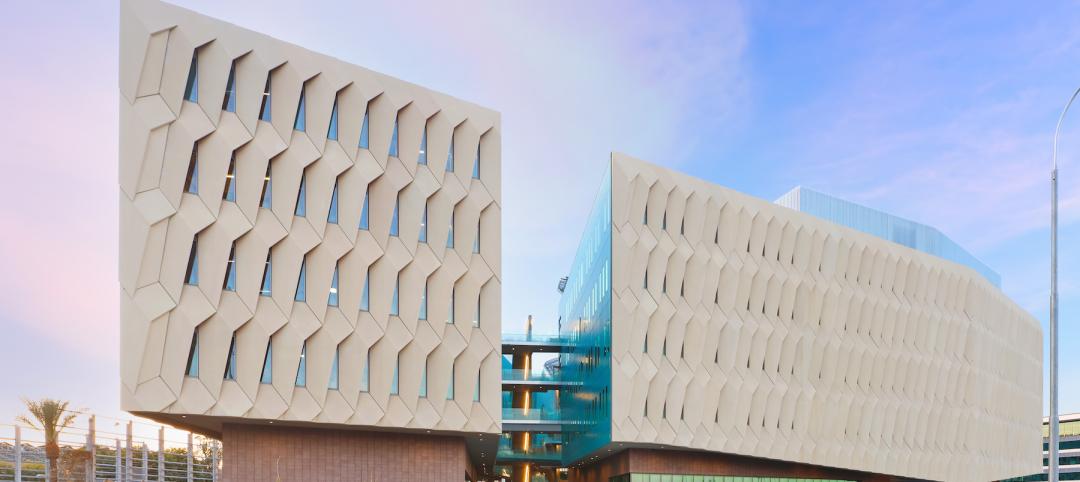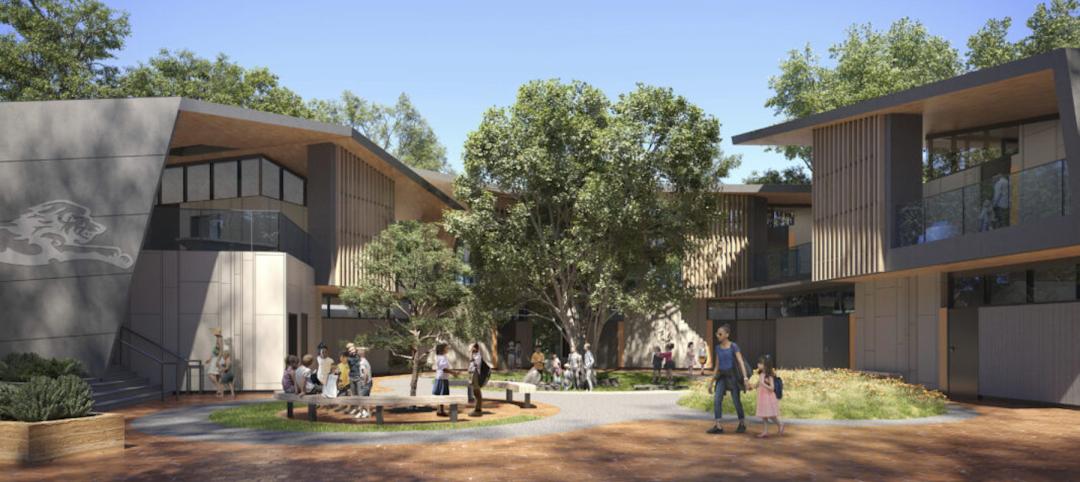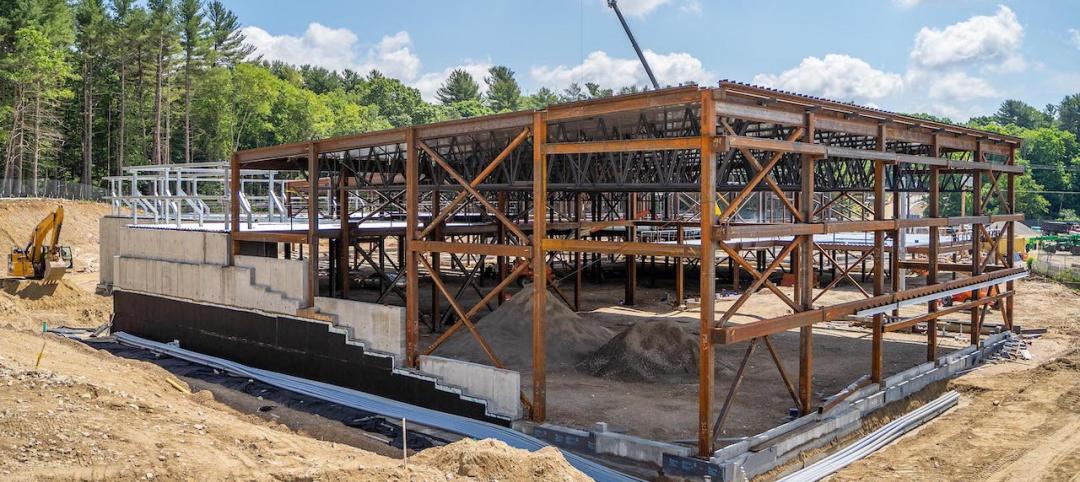HOK, the international architecture, engineering, and planning firm, will promote its President and 25-year company veteran Bill Hellmuth, AIA, to the position of Chief Executive Officer, effective April 19.
Hellmuth, who is the nephew of the firm’s founder George Hellmuth (its initials are an acronym for Hellmuth, Obata & Kassabaum), has been President since 2005. When he steps into the CEO post, he will replace Patrick MacLeamy, FAIA, LEED AP, who has served as HOK’s chief for 13 of the 49 years he’s been with the firm.
MacLeamy will remain as HOK’s chairman. During his HOK career, MacLeamy has overseen the establishment of several HOK regional offices in the U.S. and Asia. He has held leadership roles on several landmark HOK projects, including the Moscone Convention Center in San Francisco and King Khalid International Airport in Riyadh, Saudi Arabia.
In a statement, Hellmuth identified HOK’s “sweet spot” as “the intersection of design excellence and thought leadership, combining design leadership with expertise in specific markets and building types around the world.”
HOK has 1,800 employees (it is 100% employee owned) in 24 offices worldwide. It has current projects in 75 countries.
Hellmuth has a total of 37 years experience in the architecture industry, including a stint with Skidmore, Owings and Merrill. He joined HOK’s St. Louis office in 1991, and two years later was promoted to lead HOK’s Washington, D.C. office. He joined the firm’s executive committee in 2004.
A strong advocate for sustainable design, Hellmuth began integrating sustainability into every project before LEED certification became a benchmark. In 2014 he was named Senior Fellow of the Design Futures Council, and a GSA Design Excellence Peer.
Related Stories
| Aug 8, 2022
Mass timber and net zero design for higher education and lab buildings
When sourced from sustainably managed forests, the use of wood as a replacement for concrete and steel on larger scale construction projects has myriad economic and environmental benefits that have been thoroughly outlined in everything from academic journals to the pages of Newsweek.
AEC Tech | Aug 8, 2022
The technology balancing act
As our world reopens from COVID isolation, we are entering back into undefined territory – a form of hybrid existence.
Legislation | Aug 5, 2022
D.C. City Council moves to require net-zero construction by 2026
The Washington, D.C. City Council unanimously passed legislation that would require all new buildings and substantial renovations in D.C. to be net-zero construction by 2026.
Cultural Facilities | Aug 5, 2022
A time and a place: Telling American stories through architecture
As the United States enters the year 2026, it will commence celebrating a cycle of Sestercentennials, or 250th anniversaries, of historic and cultural events across the land.
Sponsored | | Aug 4, 2022
Brighter vistas: Next-gen tools drive sustainability toward net zero line
New technologies, innovations, and tools are opening doors for building teams interested in better and more socially responsible design.
| Aug 4, 2022
Newer materials for green, resilient building complicate insurance underwriting
Insurers can’t look to years of testing on emerging technology to assess risk.
Sustainability | Aug 4, 2022
To reduce disease and fight climate change, design buildings that breathe
Healthy air quality in buildings improves cognitive function and combats the spread of disease, but its implications for carbon reduction are perhaps the most important benefit.
Multifamily Housing | Aug 4, 2022
Faculty housing: A powerful recruitment tool for universities
Recruitment is a growing issue for employers located in areas with a diminishing inventory of affordable housing.
Multifamily Housing | Aug 3, 2022
7 tips for designing fitness studios in multifamily housing developments
Cortland’s Karl Smith, aka “Dr Fitness,” offers advice on how to design and operate new and renovated gyms in apartment communities.
Building Materials | Aug 3, 2022
Shawmut CEO Les Hiscoe on coping with a shaky supply chain in construction
BD+C's John Caulfield interviews Les Hiscoe, CEO of Shawmut Design and Construction, about how his firm keeps projects on schedule and budget in the face of shortages, delays, and price volatility.

















